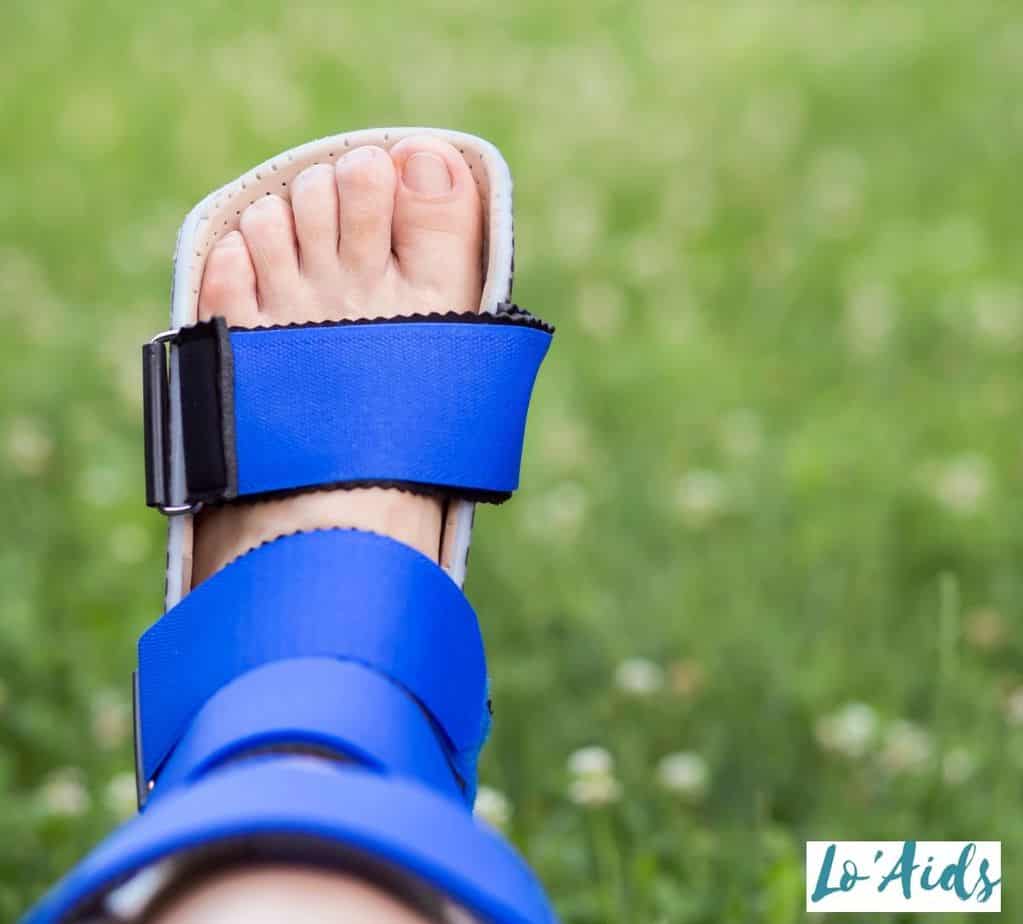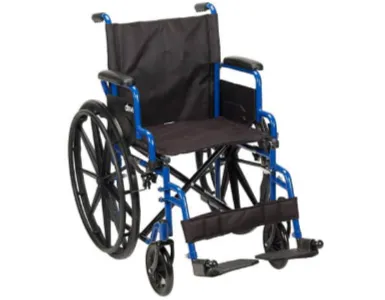What is an AFO brace used for?
If this is a question that has been bothering you, it’s time to learn more about these aids.
AFO braces come in so many designs and are recommended to treat numerous injuries and conditions of the lower leg and foot.
Here’s all you need to know about these devices.
Don’t forget to also check our guide on the Soft AFO Brace for Foot Drop and check out this video.
Table of Contents
What is an AFO Brace?
AFO, or ankle-foot orthosis, is a brace in an L shape worn on the lower part of the leg or the foot.
This is a device that can be worn on one foot or both feet, depending on the needs.
It can actually be a custom-built design for every individual, or off-the-shelf and it prevents or reduces the range of motion of the lower leg and foot.

Ankle-foot orthoses support the ankle joints, keep the joints and muscles in a neutral position, prevent unwanted movements, increase gait stability, improve muscle tone.
AFO braces are currently the most widely used orthotics in the United States and make up around 26% of all orthotics in the country.
This isn’t a device that you can just go and purchase. A professional should evaluate your issue, decide if you need it and what kind is the most suitable.
Check: The Best Shoes For AFO Braces For Adults
What Does An AFO Do
When doctors prescribe one of these devices, they want to either treat certain foot and neurological conditions or speed up recovery after surgery.
The main reason why AFO braces are a part of the treatment plan for so many patients is because they’re efficient in:
- Reduces foot pain and discomfort from a condition or after surgery
- Assists patients who can’t move because of foot surgery, ankle surgery, or a disease
- These assistive devices also give additional support
- Prevents patients from falling to the ground while wearing this medical device
- Provides a normal position for the foot and ankle so that patients can stand
- Gives support to weak feet and ankles
- Prevents, controls, or limits movements of the foot or lower leg depending on the injury and disease
- Helps patients get back to a normal, efficient gait pattern
- Protects the lower leg and foot from possible hits from other surrounding objects while in recovery
AFO Brace Uses
If you are wondering what is an AFO brace used for, we’ll make sure you get all your answers.
An ankle-foot orthosis is usually prescribed after foot and ankle surgeries.
Another reason why AFOs are used is to treat common neurological and musculoskeletal diseases that prevent the normal function of muscles, joints, and nerves.
Every time there is a more serious ankle joint or muscle problem that needs to be treated, these braces can provide the necessary support.

A recent study says that AFOs ‘represent an essential component of the nonoperative management protocols for a wide variety of acute and chronic disorders of the foot and ankle including congenital deformities, traumatic injuries, inflammatory disorders (RA), arthritis (forefoot, midfoot, and hindfoot), neurologic conditions, diabetes, and sports-related injuries.’
- During foot drop treatments: Check our complete guide about how does an AFO help foot drop.
- Patients with plantar fasciitis
- Cerebral palsy
- Multiple sclerosis
- Stroke
- Muscular dystrophy
- ALS
- Spina bifida
- Arthritis and arthritic conditions
- Sprains
- Fractures
This is a medical device with a wide variety of uses. During the treatment, it will help the foot and joints get back to a correct position and eliminate any gait abnormality.
You have to remember that in most cases, the treatment will also include physical therapy for faster and proper recovery.
Types Of AFOs
If you’re looking for the best AFO brace for your injury or medical condition, you should know that there are numerous types of AFO. Some of the most common ankle braces used in orthotic management are:
- Rigid
- Prefabricated
- Dynamic
- Posterior leaf spring
- Metal double upright
- Pressure relief
- Ground reaction
- Solid ankle
- Total carbon fiber
- Spiral carbon fiber
- Arizona
Here are the types of AFO braces:
Tips On How to Properly Wear an AFO
One of the most common questions people have when purchasing these medical devices is whether they need special shoes.
Yes, there are special shoes you can get, but you don’t have to.
You can opt for bigger shoes that are comfortable and big enough to fit the AFO in them.
Your best bet is lace-up shoes that are easy to adjust in width.
Also, the design should be flat, comfortable, and stable.

Wear long socks underneath your drop foot brace to cover the skin and to avoid abrasions and skin lesions.
Before putting on a brace, ensure to check your skin to see if there are any lesions. Do the same thing after using your device.
It’s normal to see red areas where the brace pressures the skin, but this should disappear within half an hour of removing the AFO.
Another tip is not to wear the brace continuously for many hours the first few days. Start with an hour or two, then take a break. This will be a huge change for you, and it’s best if you take things slowly.
How to Clean an AFO
AFO braces are pretty easy to clean. Since these devices are made of plastic, it will only take you a few minutes to clean them.
Remember that you need to maintain them regularly because this is an aid that you’ll be wearing almost during the entire day and for a long time.
To clean the plastic parts, you need a damp cloth. Make a mixture of water and soap, dampen the cloth and wipe the parts. Let the brace air dry.
If your AFO brace also has foam parts, you should clean those as well, once a week. You can also disinfect the device with alcohol and a clean cloth.
As you can see, the process is so straightforward and doesn’t require special cleaning solutions.
Don’t forget to clean the brace well because it can have an unpleasant smell, discolorations and lead to bacterial growth.
FAQs
How often should AFOs be replaced?
Kids usually outgrow these devices within two years, so they should get a replacement every second year. Adults, on the other hand, should replace an ankle-foot orthosis every five years. One exception is a damaged device.
What should I wear with an AFO?
Wear thin, tall socks and larger shoes. You can also purchase special shoes recommended by your orthopedist.
Can an AFO be worn without shoes?
Although some people decide to wear their brace without shoes, that’s not safe. Plastic is a slippery material, and you can end up doing more damage than before when wearing an ankle-foot orthosis without shoes.
Conclusion
Getting an ankle foot orthosis can be helpful for patients with foot and leg fractures, drop foot, stroke, arthritis, cerebral palsy, ALS, sprains, muscular dystrophy, spina bifida, and more.
Depending on the type and concern, these braces keep the joints and muscles in a neutral position, help with pain relief, keep the patient safe from falling, improve mobility, speed up the recovery process, prevent, limit, and enable specific movements.
References
- Elattar, Osama, Tyler Smith, Adam Ferguson, Daniel Farber, and Keith Wapner. 2018. “Uses of Braces and Orthotics for Conservative Management of Foot and Ankle Disorders.” Foot & Ankle Orthopaedics 3 (3): 247301141878070. https://doi.org/10.1177/2473011418780700.
- “Orthotic Devices.” 2019. Cerebralpalsy.org. 2019. https://www.cerebralpalsy.org/information/mobility/orthotics.
- “Using AFO: What to Expect?” n.d. Align Clinic. Accessed June 15, 2021. https://www.align-clinic.com/blog/what-is-afo-and-how-does-it-impact-peoples-lives.
- “What Are AFOs and How to Use Them?” n.d. Align Clinic. Accessed June 15, 2021. https://www.align-clinic.com/blog/everything-you-need-to-know-about-afos.







An ankle-foot orthosis is very helpful after any foot or ankle surgery. Thanks for this guide. I get to clean them the right way
Thanks for this. I will remember to wear them with thin, tall socks and larger shoes.
Thank you for sharing and this is great info to have on hand in the event I need one of these 😉 Thank you!
Great post! My mom has arthritis disease. I need to share this info with her.
This is such a detailed guide. I’ve only seen this in some shows and posts before, now I know more a lot about it.
This would be a helpful review for those who needs one. Great post!
This device can help a lot in certain situations. It’s important to know the specific use. Thanks for helping us to choose the right decision!
This is such a helpful post, at least we know what product can help us or anyone we know who might be needing these orthotics.